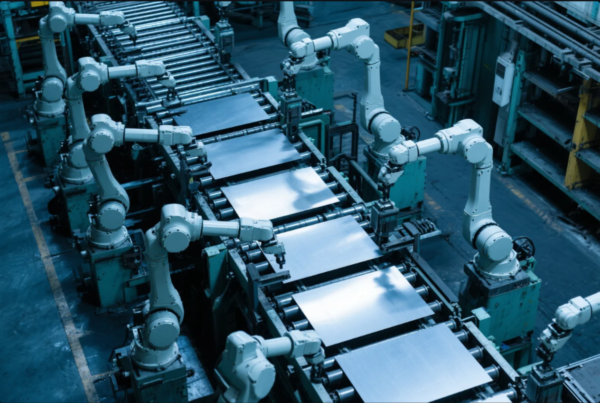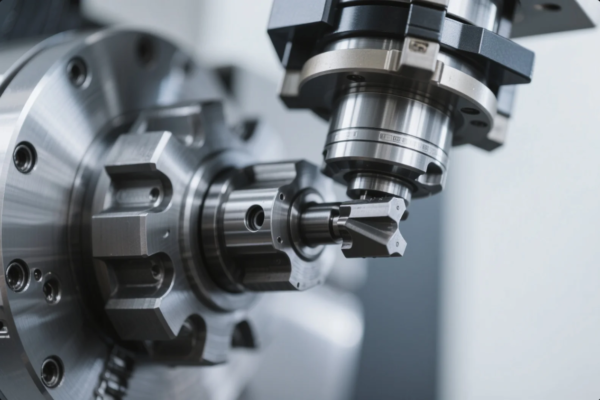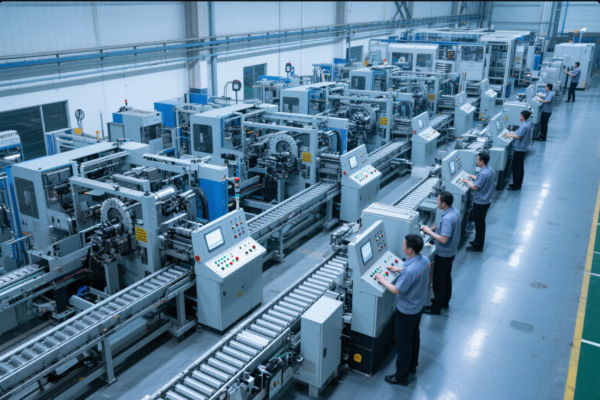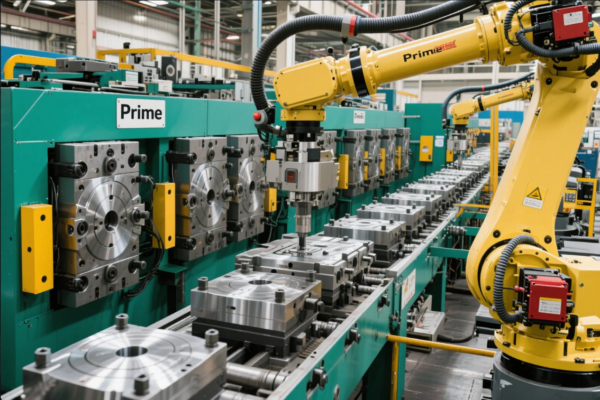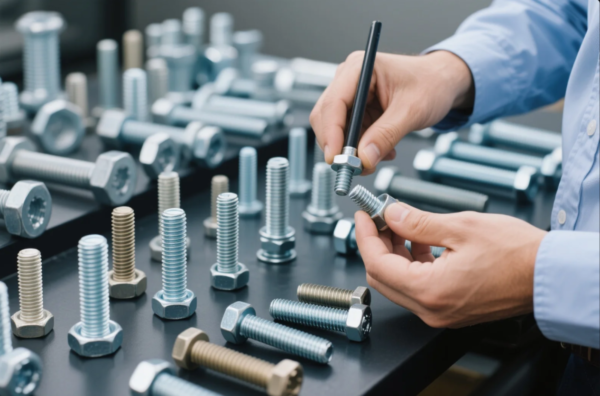Top Welding Components of 2025: Enhancing Safety and Efficiency in Welding Operations
In the rapidly evolving landscape of industrial manufacturing, welding remains a cornerstone process that demands both precision and safety. As we navigate through 2025, technological advancements have revolutionized welding equipment, introducing components that not only enhance operator safety but significantly boost operational efficiency. These innovations address longstanding challenges faced by welding professionals, from eye strain and physical discomfort to precision limitations and material waste.
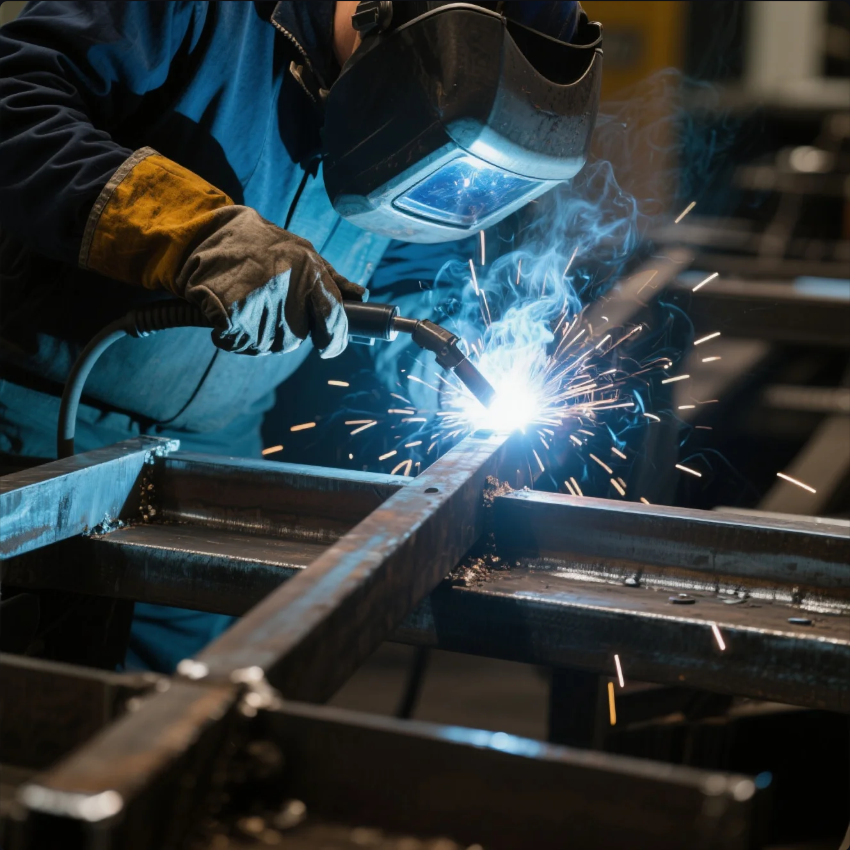
The modern welding professional now has access to an unprecedented array of high-tech components designed with human-centered engineering principles. Auto-darkening helmets with advanced optical technologies, ergonomically designed torches with intuitive controls, and accessories crafted from next-generation materials have transformed what was once considered a physically demanding trade into a more comfortable and precise craft.
This comprehensive guide explores the cutting-edge welding components of 2025 that are setting new standards in the industry. Whether you're a seasoned welding engineer, a procurement specialist for manufacturing operations, or a hands-on welder looking to upgrade your toolkit, understanding these innovations is crucial for maintaining competitive advantage and workplace safety.
From revolutionary lens technologies that provide true color perception to smart torches that adjust parameters automatically, these components represent the pinnacle of welding technology available today. Join us as we delve into the features, benefits, and practical applications of these game-changing welding tools that are reshaping the future of metal fabrication.
Table of Contents
- Top Welding Components of 2025: Enhancing Safety and Efficiency in Welding Operations
- Advanced Auto-Darkening Helmet Technologies
- Ergonomic Welding Torches and Handles
- Enhanced Lens Technologies
- Innovative Welding Accessories
- Material Durability Advancements
- Safety Enhancements and Standards
- Conclusion
Advanced Auto-Darkening Helmet Technologies
In the world of welding, eye protection isn't just about safety—it's about precision, comfort, and productivity. The year 2025 has witnessed remarkable advancements in auto-darkening helmet technologies that have transformed the welding experience. These innovations address the fundamental challenges welders have faced for decades: achieving perfect visibility of the weld pool while maintaining maximum eye protection.

True Color Technology
True Color Technology represents one of the most significant breakthroughs in welding helmet design. Unlike traditional auto-darkening filters that produce a greenish or bluish tint, True Color Technology delivers unprecedented color accuracy and clarity.
This advanced optical system employs sophisticated UV and IR filtering mechanisms that allow welders to perceive a wider spectrum of natural colors without distortion. The ability to distinguish between subtle color variations—such as differentiating between orange and red in the weld pool—enables welders to detect intricate details and potential defects with greater accuracy.
Leading models featuring this technology, such as the ESAB Sentinel A60 and Optrel Crystal 2.0, provide exceptional visual clarity that reduces eye fatigue during extended welding sessions. The natural color perception remains consistent in both light and dark states of the lens, allowing welders to maintain their helmets in position even during non-welding tasks, significantly improving workflow efficiency.
4C Technology
Lincoln Electric's proprietary 4C Technology, available in their Viking series helmets, has set new standards for optical performance in 2025. This innovative LCD technology enhances the visible color spectrum through four distinct performance factors:
-
Color: Expands the range of perceivable natural hues in both light and dark states, creating a more realistic visual experience.
-
Clarity: Achieves the highest optical clarity rating (1/1/1/1 per EN379 standards), minimizing distortion, haziness, and inconsistencies.
-
Cut: Ensures uniform shade and view at all angles, critical for welding objects in challenging positions.
-
Carat: Reduces lens weight significantly, preventing neck strain during prolonged use.
The Viking 3350 series, featuring 4C technology, has become particularly popular among professional welders handling complex projects that require exceptional visibility and precision. The technology's ability to minimize color saturation while enhancing contrast has proven invaluable for detailed TIG welding applications where weld pool control is paramount.
ClearLight Lens Technology
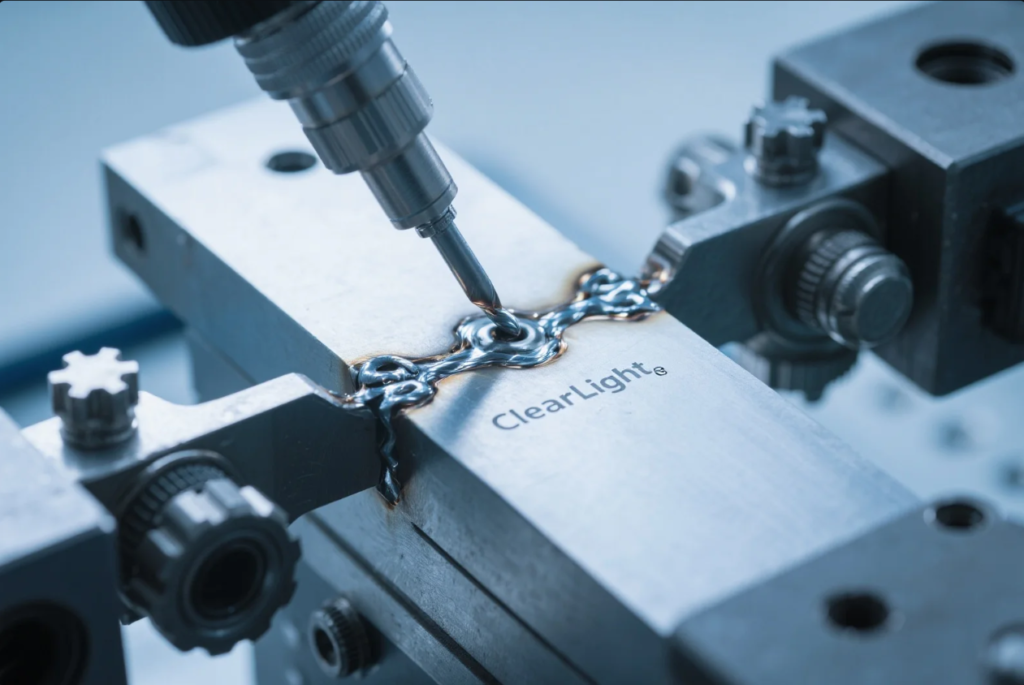
Miller Electric's ClearLight technology, with its latest iterations ClearLight 2.0 and ClearLight 4x, has revolutionized how welders perceive their work environment. This technology employs wide-band filters that allow a broader range of colors to pass through the lens, resulting in a brighter, more natural view.
The most significant advantage of ClearLight technology is its exceptionally bright inactive state. With light shade ratings as low as 3.0 (compared to traditional 4.0 or higher), welders can maintain excellent visibility during setup, inspection, and grinding tasks without removing their helmets. This seamless transition between welding and non-welding tasks has dramatically improved workflow efficiency and reduced the risk of eye injuries from frequent helmet removal.
The Miller Digital Infinity series helmets featuring ClearLight technology have gained widespread adoption in manufacturing environments where welders frequently alternate between welding and other tasks. Users report significantly reduced eye strain and improved weld quality due to the enhanced visibility of the weld pool and surrounding area.
PureColor Lens Technology
Hobart Welders' PureColor technology represents another significant advancement in lens clarity for 2025. This technology employs advanced filters that allow more natural light transmission while maintaining complete protection against harmful UV and IR radiation.
The result is a brighter, clearer view with improved natural color perception that helps welders identify subtle variations in the weld pool. This enhanced visibility is particularly valuable for precision welding applications where detecting minor imperfections can make the difference between a successful weld and a costly failure.
Hobart's Inventor series helmets featuring PureColor technology have become favorites among both professional and hobbyist welders due to their exceptional clarity and affordable price point. The technology's ability to reduce eye fatigue during extended welding sessions has made these helmets particularly popular in educational settings and high-volume production environments.
Crystal Lens Technology

Optrel's Crystal Lens Technology has pushed the boundaries of optical clarity even further in 2025. This revolutionary system achieves an unprecedented light state of 2.0, the brightest in the industry, providing an almost unrestricted view when not actively welding.
What sets Crystal Lens Technology apart is its ability to maintain true color perception across the entire shade range. Whether at its lightest setting of 2.0 or its darkest welding shade of 12, the lens preserves natural color relationships, allowing welders to see their work with unprecedented accuracy.
The Optrel Crystal 2.0 helmet featuring this technology has become the gold standard for professional welders working on critical applications where perfect visibility is non-negotiable. Though commanding a premium price, users consistently report that the investment pays dividends in improved weld quality, reduced errors, and enhanced comfort during long shifts.
Smart Helmet Features and Connectivity
The most groundbreaking development in 2025's welding helmets is the integration of smart features and connectivity options. Modern helmets now incorporate sensors, processors, and wireless communication capabilities that transform them from passive protection devices into active workflow enhancement tools.
Advanced models now feature:
- Adaptive shade technology that automatically adjusts darkness levels based on the specific welding process and amperage
- Bluetooth connectivity for integration with welding power sources to automatically configure optimal lens settings
- Heads-up display (HUD) systems that project critical welding parameters directly into the welder's field of view
- Voice control capabilities allowing hands-free adjustment of settings
- Environmental sensors that monitor air quality and temperature inside the helmet
- Augmented reality overlays that assist with weld placement and quality verification
These smart features represent the convergence of welding technology with the broader digital transformation of manufacturing. By providing welders with real-time information and automated adjustments, these helmets not only enhance safety but significantly improve productivity and weld quality.
The integration of these advanced auto-darkening technologies has fundamentally transformed the welding experience in 2025. What was once considered an unavoidable occupational hazard—eye strain and limited visibility—has been largely eliminated through these innovations. Today's welders can work longer, with greater precision, and in greater comfort than ever before, setting new standards for both safety and efficiency in welding operations.
Ergonomic Welding Torches and Handles
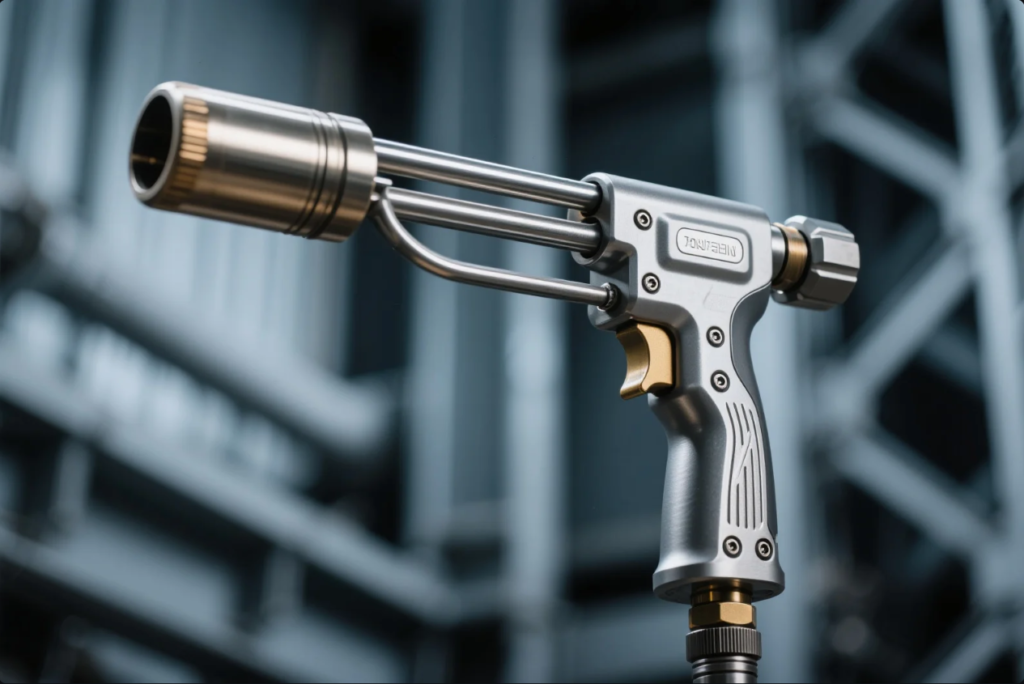
In the evolving landscape of welding technology, ergonomic design has taken center stage in 2025, particularly in the development of welding torches and handles. These critical components, which welders grip for hours during operation, have undergone significant transformations to reduce physical strain, enhance precision, and improve overall welding efficiency.
Modular Design Innovations
The most notable advancement in 2025's welding torches is the widespread adoption of fully modular designs. Unlike traditional welding torches that required complete replacement when a component failed, today's modular torches allow for quick interchange of individual parts—from handles and necks to consumables and cable assemblies.
TBi Industries has pioneered this approach with their latest TIG torch series, featuring a "building block" design philosophy. These torches allow welders to customize their setup based on specific job requirements, swapping between different neck angles, handle styles, and cooling systems without replacing the entire unit. This modularity not only reduces downtime and maintenance costs but also enables welders to optimize their equipment for each unique application.
The economic and environmental benefits of this approach are substantial. By replacing only the worn components rather than entire torch assemblies, companies can reduce equipment costs by up to 40% while significantly decreasing electronic waste. This aligns perfectly with the industry's growing focus on sustainable manufacturing practices.
Weight Reduction and Balance Improvements
The physical toll of wielding heavy torches for extended periods has long been a challenge in the welding profession. In 2025, manufacturers have made remarkable progress in reducing torch weight while maintaining durability and performance.
Advanced composite materials, including carbon fiber reinforced polymers and aerospace-grade aluminum alloys, have replaced heavier traditional materials in many torch components. These materials offer superior strength-to-weight ratios, allowing for substantial weight reductions without compromising structural integrity.
Beyond mere weight reduction, significant attention has been paid to balance optimization. Modern torches feature carefully calculated weight distribution that places the center of gravity closer to the welder's hand, reducing wrist strain and improving control. Some models, like the ESAB Velocity series, incorporate adjustable counterweights that allow welders to fine-tune the balance according to their preference.
The impact on welder health and productivity has been profound. Studies conducted by occupational health researchers in early 2025 indicate that these ergonomic improvements can reduce muscle fatigue by up to 30% during extended welding sessions, leading to fewer work-related musculoskeletal disorders and increased productivity.
Advanced Thermal Management
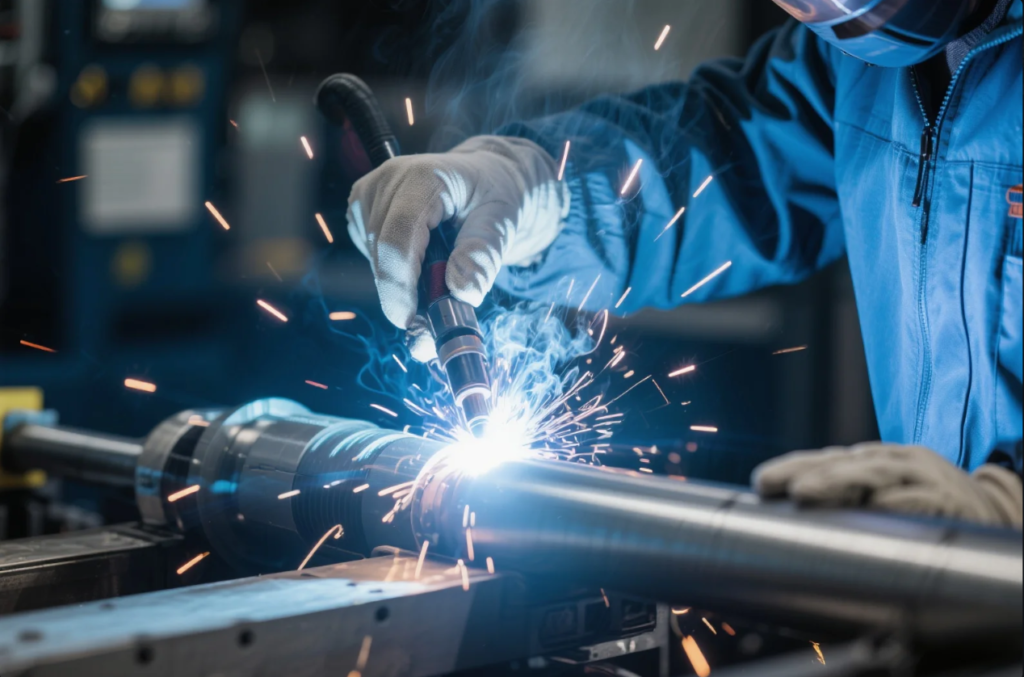
Heat management has been revolutionized in 2025's welding torches, addressing one of the most persistent comfort issues in welding operations. Traditional torches often became uncomfortably hot during extended use, requiring frequent breaks or bulky insulation that compromised handling.
Today's advanced torches incorporate multi-layer thermal barrier technologies that effectively isolate heat while maintaining a slim profile. Micro-channeled cooling systems circulate coolant more efficiently through precisely engineered pathways, dissipating heat away from handle areas without increasing bulk.
Lincoln Electric's new UltraCool Pro series exemplifies this advancement, utilizing phase-change materials within the handle that absorb excess heat during operation. These materials, similar to those used in aerospace applications, can absorb significant thermal energy without temperature increase, creating a comfortable grip temperature even during high-amperage, extended-duration welding tasks.
For air-cooled torches, innovations in heat sink design have dramatically improved passive cooling efficiency. Biomimetic cooling fins inspired by natural heat-dissipating structures found in certain plant species maximize surface area while minimizing weight, allowing for cooler operation without water circulation systems.
Smart Torches with Digital Controls
Perhaps the most transformative development in 2025's welding torches is the integration of digital controls and smart features directly into the handle. These intelligent torches serve as an interface between the welder and increasingly sophisticated power sources, putting precise control literally at the welder's fingertips.
Advanced models now feature:
- OLED touch displays built into the handle that show real-time welding parameters
- Integrated control buttons allowing parameter adjustments without returning to the power source
- Programmable presets that can be activated with a simple button press
- Haptic feedback systems that provide tactile alerts about parameter changes or potential issues
- Motion sensors that detect torch position and automatically adjust settings for optimal results
- Biometric grip sensors that can identify individual welders and load their preferred settings
Miller Electric's DigitalPro torch series exemplifies this trend, featuring a full-color display and intuitive control wheel that allows welders to adjust amperage, pulse frequency, and other parameters without breaking their concentration on the weld pool. The system also monitors consumable life and alerts welders when nozzles or electrodes need replacement, preventing quality issues before they occur.
These digital integrations significantly streamline the welding process, reducing the time spent walking between the workpiece and power source to make adjustments. More importantly, they allow welders to make precise, real-time modifications to their parameters based on immediate feedback from the weld pool, resulting in higher quality welds and fewer defects.
Customizable Grip Options
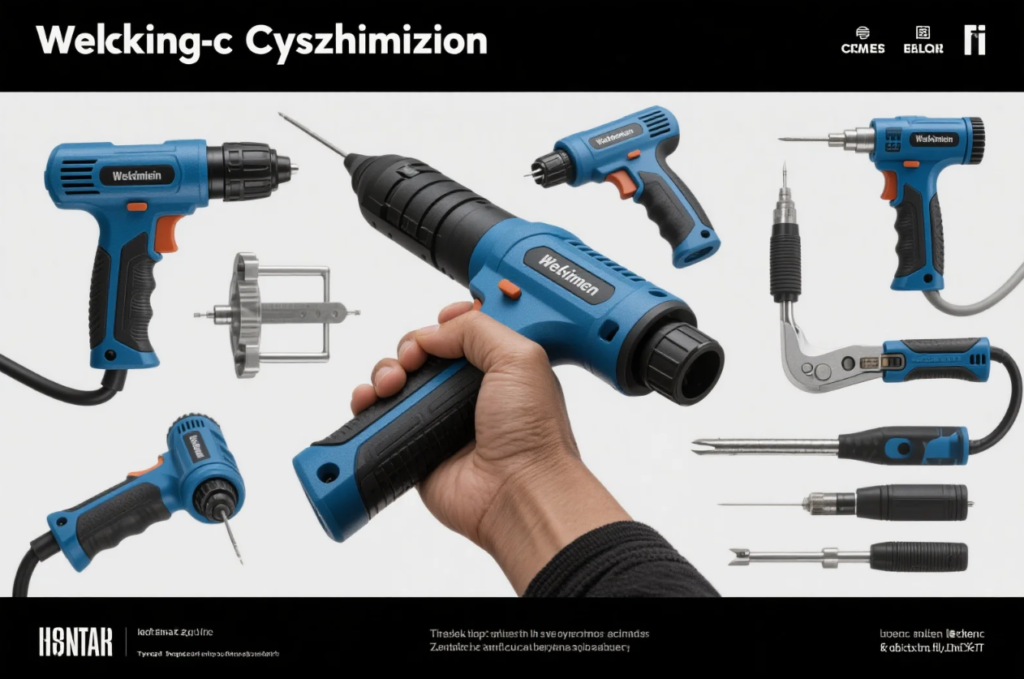
Recognizing that hand sizes and gripping preferences vary widely among welders, manufacturers in 2025 have embraced customization options for torch handles. This personalization goes far beyond the simple rubber sleeves of previous generations, offering truly tailored solutions for individual comfort.
Leading manufacturers now offer:
- Interchangeable grip modules in various sizes and shapes
- Adjustable grip circumference mechanisms that expand or contract to fit different hand sizes
- Custom grip materials with varying durometer ratings (softness/hardness)
- 3D-printed custom grips molded to individual hand contours
- Textured grip patterns optimized for different glove types and working conditions
Fronius has taken this concept furthest with their ErgoFlex system, which allows welders to select from six different grip modules and three different trigger styles. The system even includes an option for pressure-sensitive triggers that respond to grip strength rather than finger movement, reducing strain for welders with repetitive stress injuries or arthritis.
The emphasis on customization reflects the industry's growing recognition that welder comfort directly impacts both productivity and weld quality. By providing tools that can be tailored to individual ergonomic needs, manufacturers are helping to extend careers and improve results across the welding profession.
The evolution of welding torches in 2025 represents a perfect convergence of ergonomic science, materials innovation, and digital technology. These advancements have transformed what was once considered a simple tool into a sophisticated interface between welder and workpiece, enhancing both the experience and the outcome of the welding process. As these technologies continue to mature and become more accessible, they promise to address many of the physical challenges that have historically limited productivity and career longevity in the welding profession.
Enhanced Lens Technologies
The lens is the critical interface between a welder's eyes and the welding arc, making lens technology one of the most important aspects of welding safety and efficiency. In 2025, lens technologies have undergone remarkable advancements that go far beyond simple darkening capabilities, offering unprecedented levels of clarity, protection, and functionality.
Wide-View Lens Designs
Traditional welding helmets often restricted peripheral vision, creating a "tunnel vision" effect that limited situational awareness and required frequent helmet repositioning. The latest wide-view lens designs of 2025 have dramatically expanded the field of vision, with some premium models offering up to a 100% increase in viewable area compared to standard lenses.
The ESAB Sentinel A60 features an industry-leading viewing area of 3.93" × 2.36" (100mm × 60mm), providing welders with exceptional visibility of both the weld pool and surrounding work area. This expanded field of view reduces neck strain from constant repositioning and enhances safety by improving awareness of the work environment.
Beyond simple size increases, curved lens designs have emerged as a significant innovation. These panoramic lenses, similar to those found in high-end ski goggles, provide natural peripheral vision that more closely mimics the human eye's natural field of view. The Optrel Panoramaxx features a curved lens design that extends the viewing area not just horizontally but also vertically, allowing welders to see more of their workspace without head movement.
The benefits of these wide-view designs extend beyond comfort—they directly impact productivity and safety. Studies conducted by manufacturing efficiency researchers in early 2025 indicate that wide-view lenses can reduce project completion times by up to 15% by minimizing the need to reposition the helmet and improving weld placement accuracy.
Anti-Fog and Scratch-Resistant Coatings
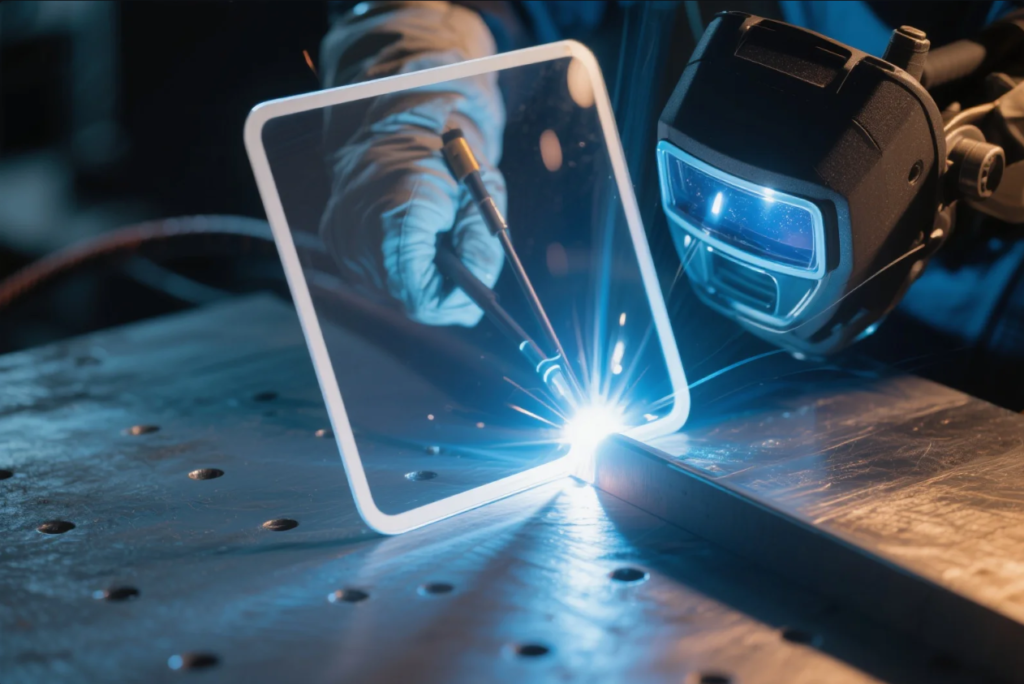
Lens fogging and scratches have long been persistent challenges for welders, compromising visibility and necessitating frequent lens replacements. The advanced coatings developed in 2025 have largely eliminated these issues through multi-layer treatment technologies.
Modern anti-fog coatings utilize hydrophilic compounds that absorb moisture and prevent condensation from forming on the lens surface. Unlike earlier spray-on solutions that required frequent reapplication, these permanent coatings are chemically bonded to the lens material at the molecular level, ensuring lasting performance even in high-humidity environments.
Scratch resistance has similarly evolved with the introduction of ceramic-infused coatings that provide hardness ratings approaching that of sapphire. These coatings, originally developed for military applications, can withstand contact with metal particles and grinding debris that would quickly damage conventional lenses. The Lincoln Electric Viking 3350 series features their proprietary "DiamondShield" coating, which has demonstrated a 400% improvement in scratch resistance compared to standard polycarbonate lenses.
Some manufacturers have gone further by incorporating self-healing coatings that can repair minor scratches when exposed to heat. These thermally activated polymers rearrange their molecular structure when warmed, effectively "filling in" surface imperfections and extending lens life significantly.
Variable Shade Technology
The latest variable shade technologies of 2025 offer unprecedented responsiveness and range, adapting to changing welding conditions with remarkable precision. Unlike earlier auto-darkening filters that offered limited shade ranges, today's advanced lenses can transition seamlessly across the entire spectrum from shade 3 (for grinding) to shade 14 (for high-amperage applications).
Miller Electric's X-Mode technology represents a significant advancement in this area, using electromagnetic sensors to detect the welding arc regardless of obstructions or ambient light conditions. This eliminates false triggering and ensures consistent protection even in challenging environments like outdoor welding or confined spaces with limited visibility.
The most sophisticated systems now offer continuous variable shade adjustment rather than predetermined increments, automatically selecting the optimal darkness level based on arc intensity. This ensures that welders always have the perfect balance between visibility and protection, regardless of changes in welding parameters or positions.
Some advanced models even incorporate zone-specific darkening, where different areas of the lens can maintain different shade levels simultaneously. This revolutionary approach allows welders to see their immediate work area at the appropriate darkness while maintaining better visibility of the surrounding environment, enhancing both precision and situational awareness.
Blue Light Filtering
One of the most significant health-focused innovations in 2025 lens technology is advanced blue light filtering. Research has conclusively demonstrated that prolonged exposure to the high-energy blue light emitted during welding can contribute to eye fatigue and potentially long-term retinal damage.
Modern welding lenses now incorporate specialized filters that selectively block harmful blue light wavelengths (380-500nm) while allowing other visible light to pass through. This selective filtering provides enhanced protection without compromising color perception or visibility.
The Optrel Crystal 2.0 features their proprietary "BlueProtect" technology, which blocks over 98% of harmful blue light while maintaining true color perception. Users report significantly reduced eye fatigue during extended welding sessions, allowing for longer productive work periods without discomfort.
Some advanced systems take this concept further by incorporating adaptive blue light filtering that adjusts based on exposure duration. These intelligent systems gradually increase blue light protection during extended welding sessions, providing additional protection as cumulative exposure increases throughout the workday.
Impact Resistance Improvements
Safety standards for welding lenses have traditionally focused on optical properties and UV/IR protection, with impact resistance as a secondary consideration. In 2025, lens manufacturers have placed renewed emphasis on impact protection, developing multi-layered lens systems that exceed even the most stringent safety standards.
The latest lenses utilize composite constructions that combine the optical clarity of traditional materials with the impact resistance of advanced polymers and ceramics. These multi-layer designs can withstand high-velocity impacts from metal particles and grinding debris without compromising their protective properties.
3M Speedglas has pioneered this approach with their "ShockShield" technology, which sandwiches the auto-darkening filter between layers of impact-resistant materials. This construction has been tested to withstand impacts up to 45 m/s (100 mph), far exceeding the requirements of ANSI Z87.1+ and European EN379 standards.
Some manufacturers have even incorporated technologies from the automotive safety industry, using laminated lens constructions similar to those found in car windshields. These lenses contain interlayers that hold fragments together even if the outer layers crack, providing an additional level of protection against eye injuries.
The advancements in lens technology for 2025 represent a quantum leap forward in both protection and functionality. By addressing longstanding challenges like limited visibility, fogging, and eye strain, these innovations are transforming the welding experience. More importantly, they're establishing new standards for occupational safety that will benefit welders for generations to come, ensuring that eye protection no longer comes at the expense of visibility, comfort, or productivity.
Innovative Welding Accessories

While helmets, torches, and lenses often receive the most attention in welding equipment discussions, accessories play an equally crucial role in ensuring safety, efficiency, and quality in welding operations. In 2025, these supporting components have undergone significant innovations that enhance the overall welding experience and address specific challenges faced by professionals in the field.
Advanced Respirator Systems
Respiratory protection has taken a quantum leap forward in 2025, with new systems that offer unprecedented protection against welding fumes while maximizing comfort and usability. Traditional respirators often created breathing resistance, trapped heat, and interfered with helmet positioning—issues that have been largely eliminated in modern designs.
The latest powered air-purifying respirators (PAPRs) feature ultra-lightweight designs that integrate seamlessly with welding helmets. 3M's Adflo 2025 system weighs just 35% of what comparable systems weighed five years ago, utilizing carbon fiber components and miniaturized blower technology to reduce strain during extended use.
Filtration technology has similarly advanced, with multi-stage systems capable of capturing particles down to 0.1 microns, including the ultrafine particulates produced when welding on materials with zinc, chromium, or manganese coatings. These advanced filters not only protect against immediate respiratory irritation but significantly reduce long-term health risks associated with metal fume exposure.
Smart features have been incorporated into premium respirator systems, including:
- Real-time air quality monitoring that displays particulate levels on connected devices
- Adaptive flow technology that increases air delivery during heavy breathing or high-temperature conditions
- Filter life indicators that provide accurate replacement timing based on actual usage patterns
- Voice amplification systems that improve communication without removing protection
- Climate control features that cool incoming air during hot conditions
Miller Electric's ClearFlow XC system exemplifies these advancements, featuring Bluetooth connectivity that allows welders to monitor air quality metrics on their smartphones and receive alerts when protection levels drop below configurable thresholds. This data-driven approach to respiratory protection ensures consistent safety while generating documentation for regulatory compliance.
Fire-Resistant Clothing with Improved Materials

Welding apparel has evolved significantly in 2025, with new materials that provide superior protection, comfort, and durability. Traditional welding garments often forced an uncomfortable choice between adequate protection and mobility—a compromise that's no longer necessary with today's advanced fabrics.
The latest fire-resistant materials utilize multi-layer composites that combine different fibers for optimal performance. These fabrics feature:
- Inherently flame-resistant fibers that maintain their protective properties for the life of the garment
- Moisture-wicking inner layers that improve comfort during extended wear
- Stretch panels strategically placed to enhance mobility without compromising protection
- Reflective cooling technology that reduces heat absorption from both welding processes and ambient conditions
- Antimicrobial treatments that prevent odor buildup during repeated use
Lincoln Electric's new Guardian Pro line exemplifies these advancements, utilizing their proprietary "FlexGuard" fabric that provides ASTM F1506 protection while offering 40% more stretch than traditional FR cotton. The material maintains its protective properties for over 100 industrial wash cycles, significantly extending garment lifespan compared to earlier generations.
Beyond material improvements, welding apparel design has become more task-specific, with garments engineered for particular welding processes and positions. Specialized jackets for overhead welding include reinforced collar designs that prevent spatter from entering the neck area, while those designed for TIG welding feature thinner materials in the forearm areas to reduce heat buildup during precise hand movements.
Ergonomic Gloves with Enhanced Dexterity
Welding gloves have undergone perhaps the most dramatic transformation among accessories, with 2025 models offering unprecedented combinations of protection and dexterity. Traditional welding gloves often forced welders to choose between adequate heat protection and the finger sensitivity needed for precise work—a compromise that new designs have largely eliminated.
Advanced materials science has enabled the development of multi-zone glove designs that provide varying levels of protection and flexibility in different areas. These gloves feature:
- Heat-resistant reinforcement in areas exposed to the highest temperatures
- Thinner, high-sensitivity panels in fingertips for enhanced tactile feedback
- Ergonomic pre-curved designs that reduce hand fatigue during extended use
- Impact protection integrated into knuckle and back-of-hand areas
- Moisture management systems that keep hands dry and comfortable
Tillman's EliteFlex series represents the cutting edge of this approach, with their segmented design providing ANSI cut level A4 protection while maintaining the dexterity to pick up a dime from a flat surface. The gloves utilize different materials in 15 distinct zones, optimizing the balance between protection and sensitivity throughout the hand.
Smart glove technology has also emerged in 2025, with premium models incorporating thin-film sensors that monitor temperature at multiple points. These systems provide haptic feedback when temperatures approach dangerous levels, allowing welders to adjust their technique or take breaks before heat transfer through the glove becomes hazardous.
Welding Screens with Improved Protection
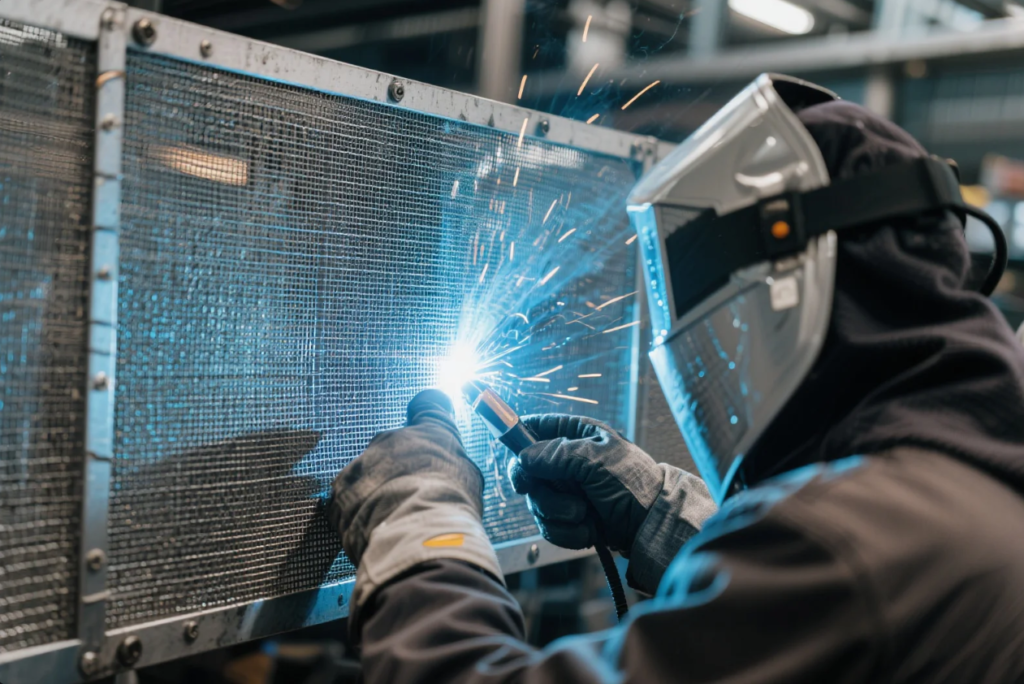
Welding screens have evolved from simple barriers to sophisticated protection systems that safeguard both people and equipment in the welding environment. Modern screens address multiple hazards simultaneously, including UV radiation, spatter, and noise—providing comprehensive workspace protection.
The latest welding screens feature:
- Advanced UV-blocking materials that filter out harmful radiation while remaining transparent to visible light
- Self-extinguishing properties that prevent fire propagation even with direct spark contact
- Modular connection systems for creating custom workspace configurations
- Acoustic dampening technology that reduces noise reflection and workshop echo
- Lightweight, high-strength frames that improve portability without sacrificing stability
Wilson Industries' SafeView Pro system exemplifies these advancements, with their optically clear panels that block 100% of UV radiation while allowing supervisors and instructors to observe welding operations safely from outside the work area. The system's modular design allows for quick reconfiguration as project requirements change, maximizing workspace flexibility.
Some advanced screen systems now incorporate active monitoring features, with embedded sensors that detect UV levels, air quality, and noise in the work area. These smart screens can be networked to facility management systems, providing real-time environmental monitoring and documentation for regulatory compliance.
Digital Welding Parameter Controls
The digitalization of welding has extended to accessory systems that provide unprecedented control over welding parameters. These digital control accessories bridge the gap between traditional welding equipment and the smart factory concept, enabling precision, consistency, and data collection.
Advanced parameter control systems now include:
- Wireless foot and hand controls that eliminate trip hazards and provide freedom of movement
- Programmable sequence controllers that automate complex parameter changes during weld progression
- Digital flow meters for shielding gas that optimize consumption and ensure consistent coverage
- Wearable controls integrated into gloves or wristbands for hands-free operation
- Voice-activated parameter adjustment systems for completely hands-free control
Lincoln Electric's APEX Controller represents the state of the art in this category, featuring a touchscreen interface that can store hundreds of welding procedure specifications (WPS) and automatically configure equipment to match. The system includes real-time monitoring that alerts welders when parameters drift outside acceptable ranges, ensuring consistent quality even with less experienced operators.
The most advanced digital control systems now integrate with enterprise resource planning (ERP) and quality management systems, automatically documenting welding parameters for each production component and creating comprehensive traceability records. This integration supports both quality assurance and regulatory compliance, particularly in critical applications like pressure vessel fabrication and aerospace components.
The evolution of welding accessories in 2025 demonstrates that innovation extends far beyond the primary tools of the trade. These supporting components have become sophisticated systems in their own right, addressing specific challenges and enhancing the overall welding experience. By improving protection, comfort, and control, these accessories enable welders to focus on their craft with fewer distractions and limitations, ultimately contributing to better quality, higher productivity, and longer careers in the welding profession.
Material Durability Advancements
In the demanding environment of welding operations, the durability of equipment components is paramount. The harsh conditions—including extreme heat, UV radiation, spatter exposure, and physical impacts—can quickly degrade substandard materials. In 2025, significant advancements in material science have revolutionized the durability and longevity of welding components, setting new standards for performance and reliability.
High-Performance Helmet Shell Materials

The outer shell of a welding helmet serves as the first line of defense against impacts, heat, and UV radiation. Traditional helmet shells made from basic thermoplastics often became brittle over time, particularly when exposed to temperature extremes and UV radiation. The latest helmet shells of 2025 utilize advanced composite materials that overcome these limitations.
Leading manufacturers have adopted multi-layer composite constructions that combine different materials to achieve optimal performance characteristics:
- Carbon fiber reinforced polymers provide exceptional strength-to-weight ratios, reducing neck strain during extended use
- Aramid fiber layers (similar to Kevlar) offer superior heat resistance and impact absorption
- Ceramic-infused thermoplastics provide enhanced UV stability and prevent degradation from prolonged sun exposure
- Self-healing polymer coatings that can repair minor scratches and abrasions automatically
The ESAB Sentinel A60 exemplifies this approach with its "DuraCore" shell material, which maintains structural integrity even after exposure to temperatures up to 180°C (356°F)—far exceeding the heat resistance of conventional helmets. This advanced material has demonstrated a 300% improvement in impact resistance compared to traditional nylon shells while reducing weight by approximately 20%.
Beyond pure performance characteristics, these advanced materials enable more sophisticated helmet designs with complex geometries that would be impossible with traditional manufacturing methods. Computer-optimized airflow channels, integrated accessory mounting points, and ergonomic contours can now be incorporated without compromising structural integrity.
Heat-Resistant Components
The intense heat generated during welding operations poses a significant challenge for equipment durability. Components that come into direct or indirect contact with heat sources must maintain their mechanical properties and functionality despite repeated thermal cycling. In 2025, new heat-resistant materials have dramatically improved the longevity of these critical components.
Advanced heat-resistant polymers derived from aerospace applications have replaced conventional plastics in components like lens frames, adjustment knobs, and ventilation systems. These materials, including polyetherimide (PEI) and polyetheretherketone (PEEK), maintain their mechanical properties at temperatures exceeding 200°C (392°F) and resist deformation even with prolonged heat exposure.
For components requiring electrical insulation, such as torch handles and cable coverings, silicone-ceramic composites have emerged as the material of choice. These materials combine the flexibility of silicone with the heat resistance of ceramics, creating insulation that remains effective even when exposed to direct spatter contact.
Miller Electric's new "ThermaShield" technology exemplifies these advancements, utilizing a proprietary ceramic-polymer composite in their torch components that maintains structural integrity even after brief contact with molten metal. This material has demonstrated a service life improvement of over 200% compared to conventional components in high-temperature applications.
Extended Lifespan Technologies
Beyond the base materials themselves, 2025 has seen the introduction of technologies specifically designed to extend the functional lifespan of welding components. These innovations address the various degradation mechanisms that typically limit equipment life, from UV damage to mechanical wear.
Anti-aging additives derived from the automotive industry have been incorporated into polymer components, preventing the molecular breakdown that typically leads to embrittlement and cracking. These stabilizers intercept free radicals generated by UV exposure and heat, maintaining material properties for significantly longer periods.
Surface treatment technologies have similarly advanced, with plasma-applied coatings that create molecular bonds with base materials rather than simply covering them. These treatments provide exceptional resistance to abrasion, chemical exposure, and environmental degradation without altering component dimensions or functionality.
Lincoln Electric's "EnduraMax" treatment process exemplifies this approach, creating a nanoscale ceramic coating on metal components that reduces friction and prevents corrosion. Components treated with this process have demonstrated wear resistance improvements of up to 500% in accelerated testing, translating to years of additional service life in real-world applications.
Self-monitoring components represent another frontier in lifespan extension, with embedded sensors that track cumulative stress, temperature exposure, and mechanical wear. These smart components can alert users when replacement is needed based on actual usage conditions rather than arbitrary time intervals, optimizing both safety and component utilization.
Environmentally Sustainable Materials
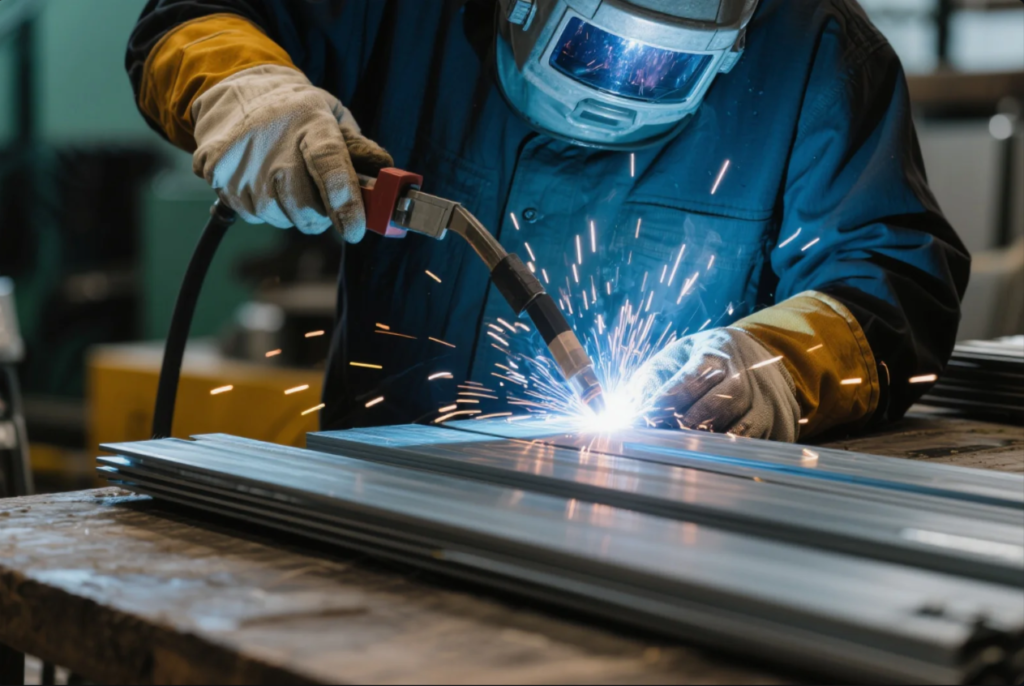
Environmental sustainability has become a significant focus in welding equipment design, with manufacturers seeking materials that reduce environmental impact without compromising performance. The materials science advancements of 2025 have made this balance increasingly achievable.
Bio-based polymers derived from renewable resources have begun replacing petroleum-based plastics in non-critical components. These materials, often reinforced with natural fibers like flax or hemp, offer comparable mechanical properties to conventional plastics while reducing carbon footprint and dependence on fossil resources.
Recycled content utilization has similarly increased, with post-consumer and post-industrial materials being reprocessed into high-performance components. Advanced sorting and purification technologies have overcome previous quality limitations, allowing recycled materials to meet the stringent requirements of welding applications.
Optrel's "EcoShield" line exemplifies this approach, with helmet components containing up to 70% recycled or bio-based materials without compromising performance or durability. The company has also pioneered a closed-loop recycling program that recovers and reprocesses components from end-of-life helmets, further reducing environmental impact.
Perhaps most significantly, manufacturers have begun designing for disassembly and material recovery, making it easier to separate different materials at end-of-life for proper recycling. Modular designs with snap-fit connections have replaced permanent adhesives and multi-material moldings, simplifying the recycling process and increasing material recovery rates.
Maintenance-Reducing Innovations
The most durable material is one that requires minimal maintenance to maintain its properties and functionality. In 2025, numerous innovations have focused specifically on reducing maintenance requirements and extending intervals between service interventions.
Self-cleaning surfaces represent one of the most practical advancements in this area. Inspired by the lotus leaf's natural water-repellent properties, hydrophobic and oleophobic coatings prevent spatter adhesion and simplify cleanup. These nanoscale treatments cause liquids and particles to bead up and roll off rather than adhering to surfaces, keeping equipment cleaner during use.
Anti-static treatments have similarly reduced maintenance needs by preventing dust and particulate buildup on helmet visors and electronic components. By dissipating static charges that would otherwise attract airborne contaminants, these treatments maintain visibility and prevent potential electronic malfunctions.
3M's "RepelMax" technology exemplifies these advancements, combining hydrophobic, oleophobic, and anti-static properties in a single treatment applied to helmet lenses. Field testing has demonstrated that lenses with this treatment require cleaning approximately 75% less frequently than untreated lenses, significantly reducing downtime and maintenance effort.
For electronic components, conformal coatings have evolved to provide comprehensive protection against moisture, dust, and chemical exposure. These microscopic protective layers conform perfectly to circuit board topography, sealing components against environmental contaminants without affecting thermal dissipation or electronic function.
The material durability advancements of 2025 represent a fundamental shift in welding equipment performance and longevity. By addressing the specific challenges of the welding environment—from extreme heat to UV exposure to physical impacts—these innovations have created components that not only last longer but perform better throughout their extended lifespans. The result is equipment that requires less frequent replacement, reduces operational costs, and provides more consistent performance, ultimately contributing to both economic and environmental sustainability in welding operations.
Safety Enhancements and Standards
As welding technology advances, safety standards and protocols have evolved in parallel to address both traditional hazards and new risks introduced by emerging technologies. In 2025, the approach to welding safety has become more comprehensive, data-driven, and proactive, establishing new benchmarks for occupational health and safety in the industry.
Updated Safety Protocols for 2025
The welding safety landscape of 2025 reflects a significant shift from prescriptive, one-size-fits-all regulations to performance-based standards that accommodate technological innovation while ensuring consistent protection. These updated protocols incorporate the latest research on occupational exposure limits, ergonomic factors, and cumulative health impacts.
The American Welding Society's 2025 Safety and Health Guidelines represent the most comprehensive revision in decades, incorporating new provisions for:
- Process-specific protection requirements that account for the unique hazards of different welding methods
- Cumulative exposure monitoring that tracks total exposure over time rather than just point measurements
- Cognitive fatigue management that addresses mental as well as physical aspects of welding safety
- Remote operation safety for robotic and semi-automated welding systems
- Electromagnetic field (EMF) exposure limits updated based on the latest medical research
Perhaps most significantly, these guidelines have shifted from focusing solely on personal protective equipment to emphasizing engineering controls and process modifications that eliminate hazards at their source. This hierarchy of controls approach prioritizes hazard elimination over hazard protection, fundamentally changing how safety is implemented in welding operations.
International harmonization of safety standards has also accelerated in 2025, with ISO 45001 welding-specific annexes creating more consistent global requirements. This harmonization has simplified compliance for multinational organizations and ensured that welders worldwide benefit from the latest safety innovations regardless of location.
Integration with Workplace Safety Systems
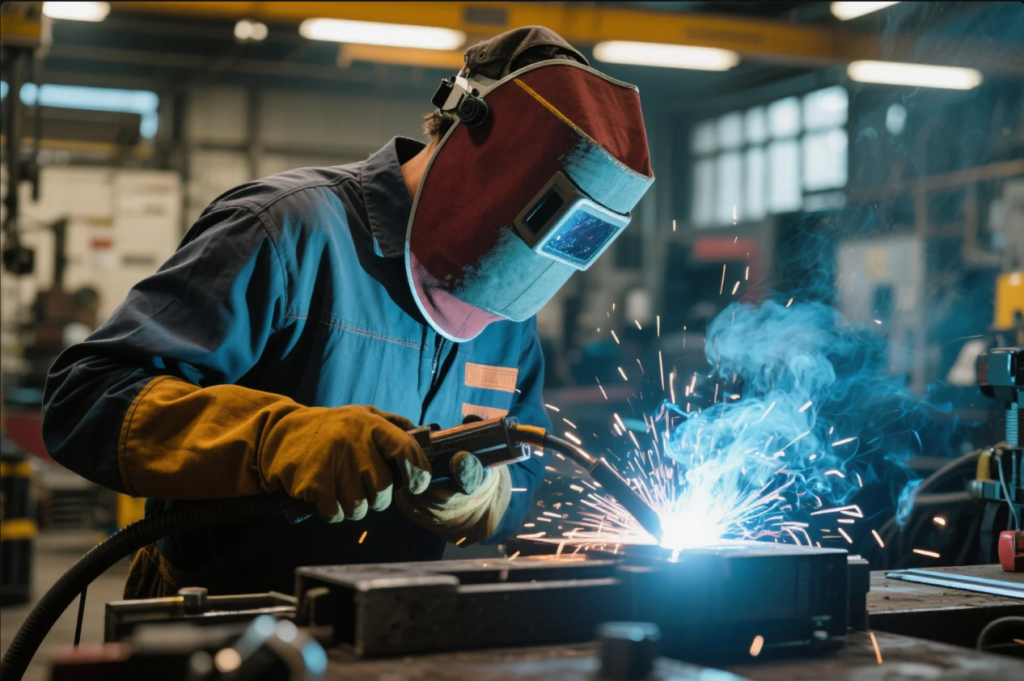
Welding safety in 2025 is no longer treated as an isolated domain but is fully integrated with broader workplace safety systems and digital infrastructure. This integration enables comprehensive risk management and creates multiple layers of protection against accidents and health hazards.
Advanced workplace monitoring systems now incorporate:
- Real-time air quality sensors that detect fume concentrations and trigger ventilation systems automatically
- Thermal imaging cameras that identify fire risks from stray sparks or overheated materials
- Motion tracking systems that detect unsafe postures or movements and provide immediate feedback
- Proximity warning systems that prevent collisions between welders and moving equipment
- Environmental condition monitoring that adjusts safety requirements based on temperature, humidity, and other factors
Miller Electric's Connected Safety ecosystem exemplifies this integrated approach, networking personal protective equipment with environmental sensors and facility management systems. When hazardous conditions are detected—such as elevated fume levels or excessive heat—the system can automatically adjust ventilation, notify supervisors, and even send alerts directly to welders' helmets with specific safety instructions.
Digital work permits and safety checklists have similarly transformed pre-work safety procedures. Mobile applications now guide welders through site-specific hazard assessments, equipment inspections, and safety protocol verification before work begins. These systems maintain digital records of compliance, automatically flag potential issues, and ensure that all safety prerequisites are met before welding operations commence.
Certification and Compliance Innovations
Welder certification and compliance verification have been revolutionized in 2025 by digital credentialing systems and real-time monitoring technologies. These innovations ensure that welders maintain appropriate qualifications and adhere to safety protocols throughout their work.
Blockchain-based certification systems have emerged as the new standard for welder qualification verification. These tamper-proof digital credentials contain comprehensive records of a welder's training, certifications, and experience, accessible via QR codes or RFID chips embedded in identification badges. Site managers can instantly verify that welders possess the specific qualifications required for each task, eliminating the risk of unqualified personnel performing specialized welding operations.
Compliance monitoring has similarly evolved with the introduction of smart PPE that tracks actual usage patterns. Advanced welding helmets now record activation times, shade levels, and even head positions during welding, creating objective documentation of safety protocol adherence. This data serves both as protection for conscientious welders and as a coaching tool for improving safety behaviors.
Lincoln Electric's Compliance Tracking System exemplifies this approach, generating automated safety compliance reports based on data collected from connected equipment. The system identifies patterns of non-compliance and provides targeted recommendations for additional training or equipment modifications, creating a continuous improvement cycle for safety performance.
Perhaps most significantly, insurance providers have begun offering premium discounts for organizations that implement these advanced compliance systems, creating financial incentives that align with safety objectives. This market-based approach has accelerated adoption of safety innovations across the industry, particularly among smaller organizations that might otherwise delay implementation.
Training and Education Technologies
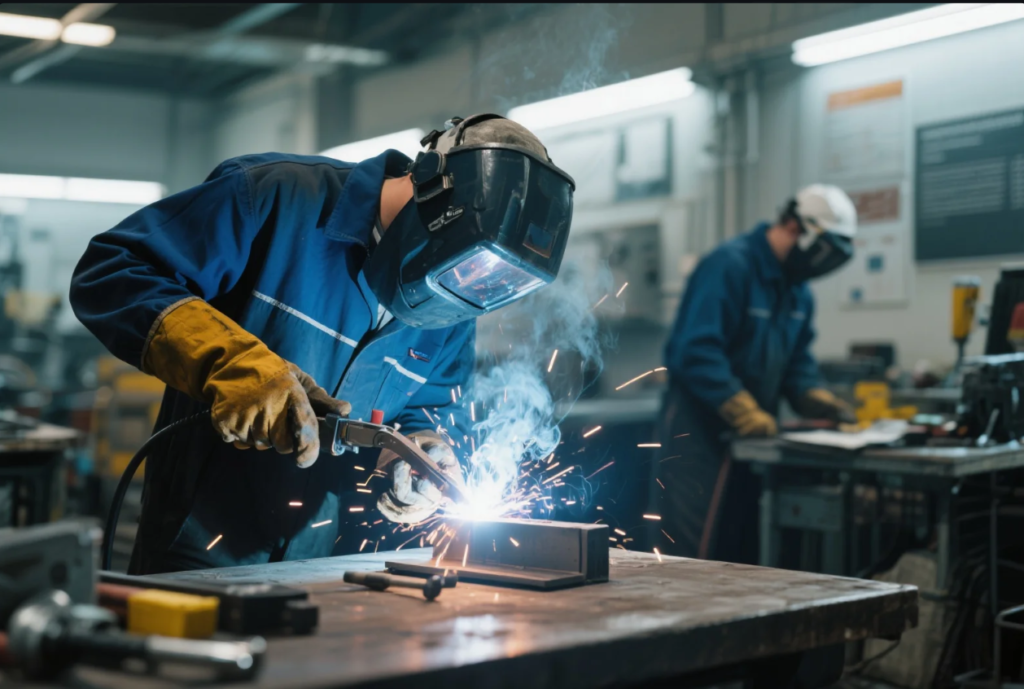
The foundation of welding safety remains proper training and education, an area that has been transformed by immersive technologies and adaptive learning systems in 2025. These innovations ensure that welders develop not just technical skills but comprehensive safety awareness that becomes second nature.
Virtual reality (VR) training systems have matured into sophisticated platforms that simulate not just welding techniques but also safety hazards and emergency responses. These systems can create realistic scenarios involving equipment failures, fires, or other emergencies, allowing welders to practice their responses in a safe environment. Research has demonstrated that this experiential learning approach improves hazard recognition and response times significantly compared to traditional classroom instruction.
Augmented reality (AR) has similarly transformed on-the-job training, with smart helmets that can overlay safety information directly in the welder's field of view. These systems can highlight potential hazards, display proper equipment setup procedures, and provide real-time feedback on technique and positioning, all while the welder performs actual work under supervision.
Miller Electric's LiveArc system represents the state of the art in this category, combining physical welding simulation with mixed reality guidance. The system tracks torch movements with sub-millimeter precision and provides immediate feedback on both technique and safety parameters, accelerating skill development while reinforcing proper safety habits from the beginning of a welder's training.
Adaptive learning platforms have personalized the educational experience, using AI to identify each welder's specific knowledge gaps and tailoring content accordingly. These systems ensure comprehensive safety knowledge without wasting time on already-mastered concepts, making training more efficient and effective for both new welders and experienced professionals updating their skills.
Risk Reduction Strategies
Beyond specific technologies and standards, 2025 has seen the emergence of comprehensive risk reduction strategies that address welding hazards from multiple angles simultaneously. These holistic approaches combine engineering controls, administrative measures, and personal protection into integrated systems that minimize risk at every level.
Predictive analytics have transformed risk assessment from a periodic exercise into a continuous process. By analyzing data from connected equipment, environmental sensors, and production systems, AI algorithms can now identify emerging risk patterns before incidents occur. These systems consider factors ranging from equipment maintenance status to ambient conditions to worker fatigue indicators, creating a comprehensive risk profile that updates in real time.
ESAB's SafetyNet platform exemplifies this approach, correlating data from multiple sources to generate risk forecasts and preventive recommendations. The system has demonstrated the ability to predict high-risk situations with over 85% accuracy, allowing supervisors to implement additional controls proactively rather than reactively.
Design for safety has become a fundamental principle in equipment development, with hazard elimination incorporated from the earliest concept stages rather than added as an afterthought. This approach has led to innovations like fully enclosed welding systems for particularly hazardous materials, remote operation capabilities for high-risk environments, and inherently safer power source designs that eliminate certain electrical and fire hazards entirely.
Perhaps most importantly, safety culture development has been recognized as a critical factor that transcends specific technologies or procedures. Organizations have implemented comprehensive programs to foster safety consciousness, open communication about hazards, and shared responsibility for risk reduction. These cultural initiatives ensure that safety innovations are fully utilized and that protocols are followed consistently, maximizing the effectiveness of technological advancements.
The safety enhancements and standards of 2025 represent a fundamental evolution in how the welding industry approaches occupational health and safety. By leveraging digital technologies, advanced materials, and data-driven approaches, these innovations are creating welding environments that are not just marginally safer but fundamentally transformed. The result is a profession where safety is no longer viewed as a constraint on productivity but as an enabler of efficiency, quality, and career longevity.
Conclusion
The Future of Welding: Safety, Efficiency, and Innovation
As we've explored throughout this comprehensive review of 2025's top welding components, the industry has undergone a remarkable transformation driven by technological innovation, material science advancements, and a renewed focus on welder health and safety. These developments collectively represent not just incremental improvements but a fundamental reimagining of the welding profession and its tools.
The integration of digital technologies into traditional welding equipment has created unprecedented levels of control, monitoring, and adaptation. Auto-darkening helmets with true color perception, smart torches with parameter control at the fingertips, and connected accessories that communicate with each other have transformed the welder's experience. What was once a trade characterized by physical discomfort, limited visibility, and repetitive strain has evolved into a high-tech profession where digital tools enhance human capabilities rather than replacing them.
Perhaps most significantly, the innovations of 2025 have largely eliminated the traditional tradeoffs between safety and productivity. Advanced materials and ergonomic designs now provide superior protection while simultaneously improving comfort and reducing fatigue. Optical technologies enhance visibility while maintaining complete eye protection. Digital controls improve precision while reducing physical strain. These synergistic improvements enable welders to work more safely, more comfortably, and more productively than ever before.
Key Trends Shaping the Future
Several overarching trends have emerged across all categories of welding components, indicating the direction the industry will likely continue to evolve:
Digitalization and Connectivity: The integration of sensors, processors, and communication capabilities into welding equipment has created an interconnected ecosystem that shares data and adapts to changing conditions. This trend will likely accelerate, with increasing automation of routine adjustments and more sophisticated data analysis to optimize both processes and outcomes.
Human-Centered Design: The focus on ergonomics, comfort, and usability represents a significant shift from equipment designed primarily for functionality to tools designed around human needs and limitations. This approach recognizes that even the most advanced equipment requires skilled human operation to achieve optimal results, and that supporting welder comfort and health directly impacts quality and productivity.
Sustainability and Longevity: The emphasis on durable materials, modular designs, and recyclable components reflects growing awareness of environmental impacts and lifecycle costs. As resources become more constrained and environmental regulations more stringent, this focus on sustainability will likely intensify, driving further innovations in material efficiency and circular design principles.
Integrated Safety Systems: The evolution from isolated safety components to comprehensive, interconnected safety ecosystems represents a fundamental shift in how the industry approaches risk management. This holistic approach, combining engineering controls, administrative measures, and personal protection, will continue to reduce incident rates and long-term health impacts across the profession.
Recommendations for Welding Professionals

For welding professionals and organizations looking to leverage these innovations effectively, several recommendations emerge from our analysis:
Invest in Comprehensive Training: The sophisticated features of modern welding equipment deliver maximum value only when users fully understand their capabilities and proper usage. Comprehensive training programs that cover not just basic operation but advanced features and integration between components will maximize return on equipment investments.
Adopt a Systems Approach: Rather than selecting individual components in isolation, consider how different elements work together as an integrated system. Compatibility between helmets, torches, and accessories from the same manufacturer often enables enhanced functionality through digital communication and coordinated features.
Prioritize Ergonomics and Comfort: The productivity impact of ergonomic equipment extends far beyond simple comfort. Components designed to reduce physical strain enable longer work periods with less fatigue, fewer errors, and reduced risk of long-term musculoskeletal injuries. These benefits typically justify the higher initial investment in premium ergonomic designs.
Embrace Data-Driven Quality Management: The monitoring and documentation capabilities of modern welding equipment create opportunities for data-driven quality improvement. By analyzing parameter data, identifying patterns in defects, and correlating settings with outcomes, organizations can systematically optimize their welding processes for both quality and efficiency.
Plan for Technological Evolution: The pace of innovation in welding technology continues to accelerate. Equipment purchases should consider not just current needs but future compatibility and upgrade paths. Modular systems that can accommodate component updates without complete replacement offer better long-term value in this rapidly evolving landscape.
Looking Forward
As we look beyond 2025, several emerging technologies show promise for further transforming the welding profession:
Artificial Intelligence Integration: Machine learning algorithms are beginning to analyze welding data to identify optimal parameters for specific applications, predict maintenance needs before failures occur, and even detect quality issues in real-time based on subtle variations in arc characteristics.
Advanced Materials: Research in nanomaterials and smart composites promises to deliver even lighter, stronger, and more responsive welding components. Self-healing materials that can repair minor damage automatically and adaptive materials that change properties based on environmental conditions represent the next frontier in equipment durability.
Augmented Reality Guidance: While current AR systems provide basic information overlays, next-generation systems will likely offer sophisticated guidance that adapts to individual welder techniques, provides real-time quality assessment, and even suggests parameter adjustments based on observed results.
Biometric Integration: The integration of health monitoring sensors into welding PPE will enable personalized safety measures based on individual physiological responses, from adjusting ventilation based on breathing patterns to recommending breaks based on fatigue indicators.
The welding profession has always been characterized by the skilled manipulation of fundamental physical forces—heat, electricity, and metallurgical transformation. What has changed in 2025 is the sophistication of the tools that harness these forces and the degree to which they extend and enhance human capabilities rather than simply channeling them.
For welding professionals navigating this evolving landscape, the key to success lies in embracing these innovations not as replacements for skill and experience but as tools that amplify expertise and precision. By combining traditional craftsmanship with cutting-edge technology, today's welders can achieve levels of quality, efficiency, and safety that previous generations could only imagine—ensuring that this ancient craft remains vital and relevant in our increasingly high-tech world.

